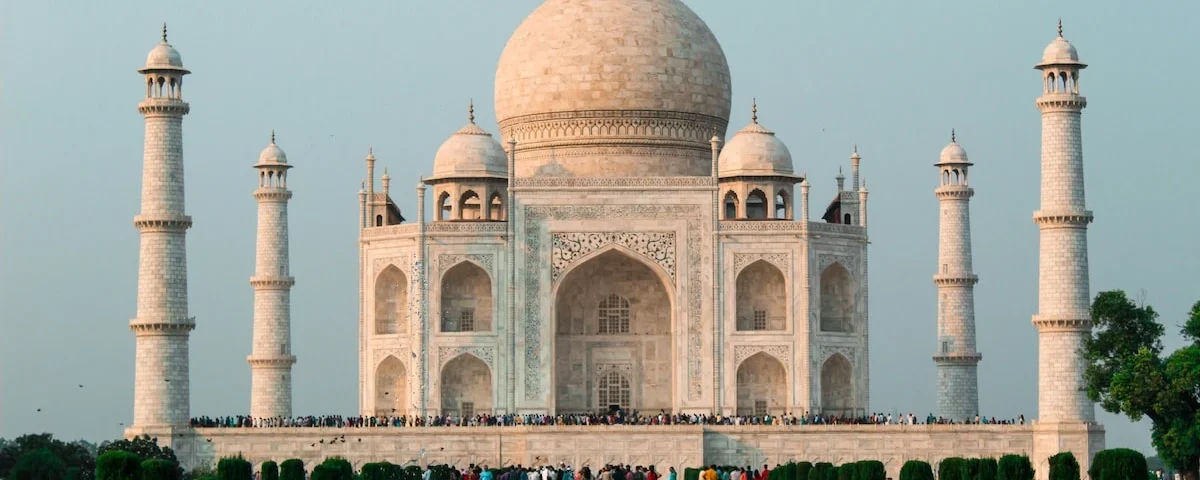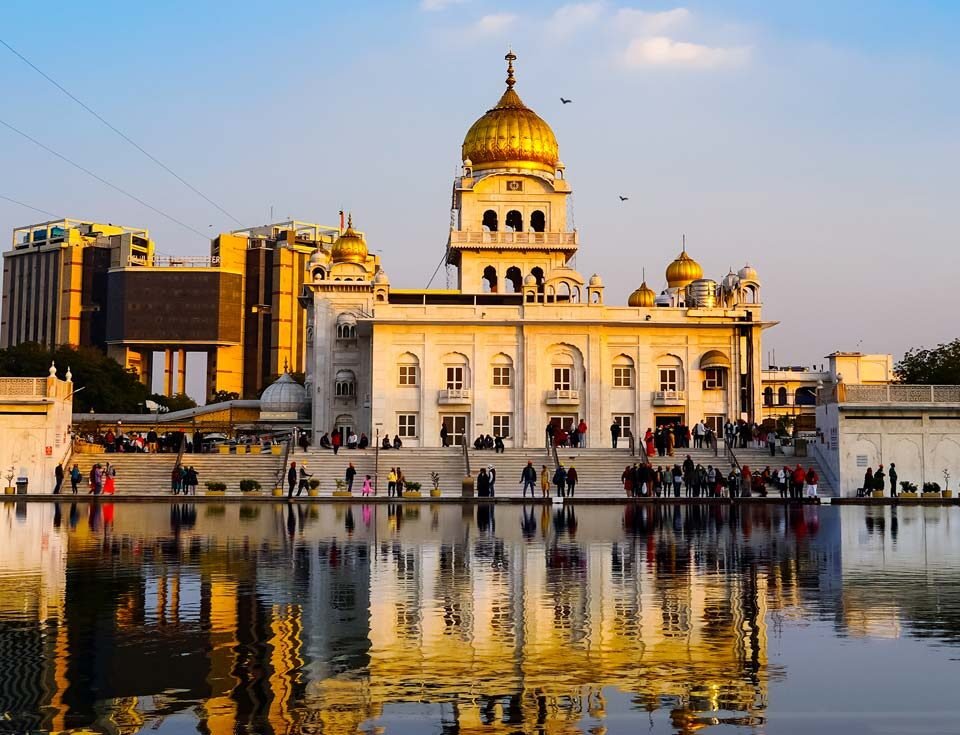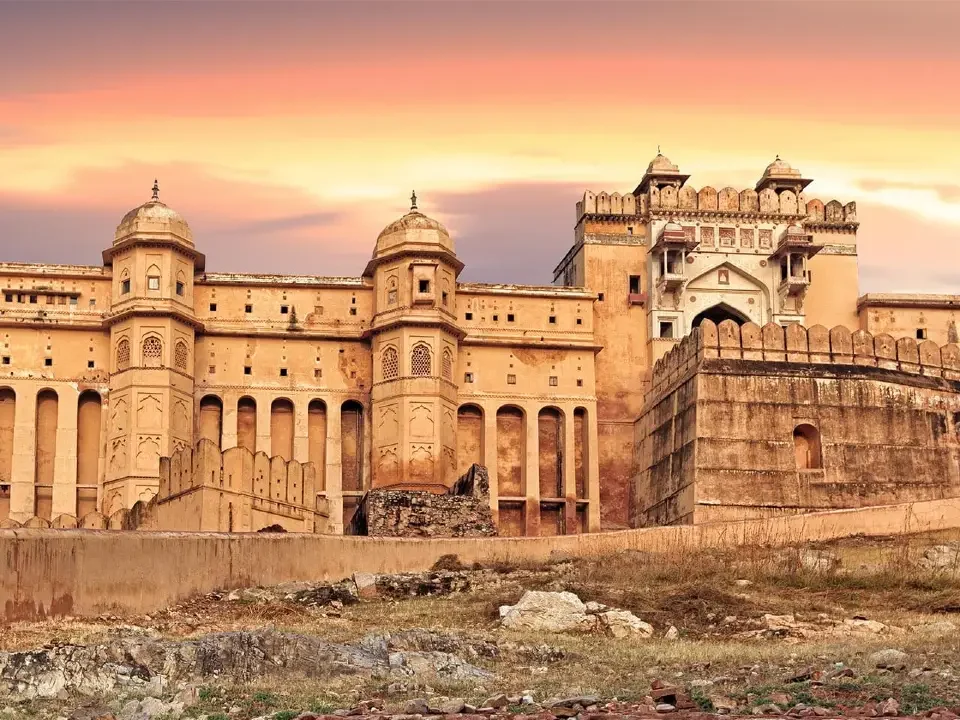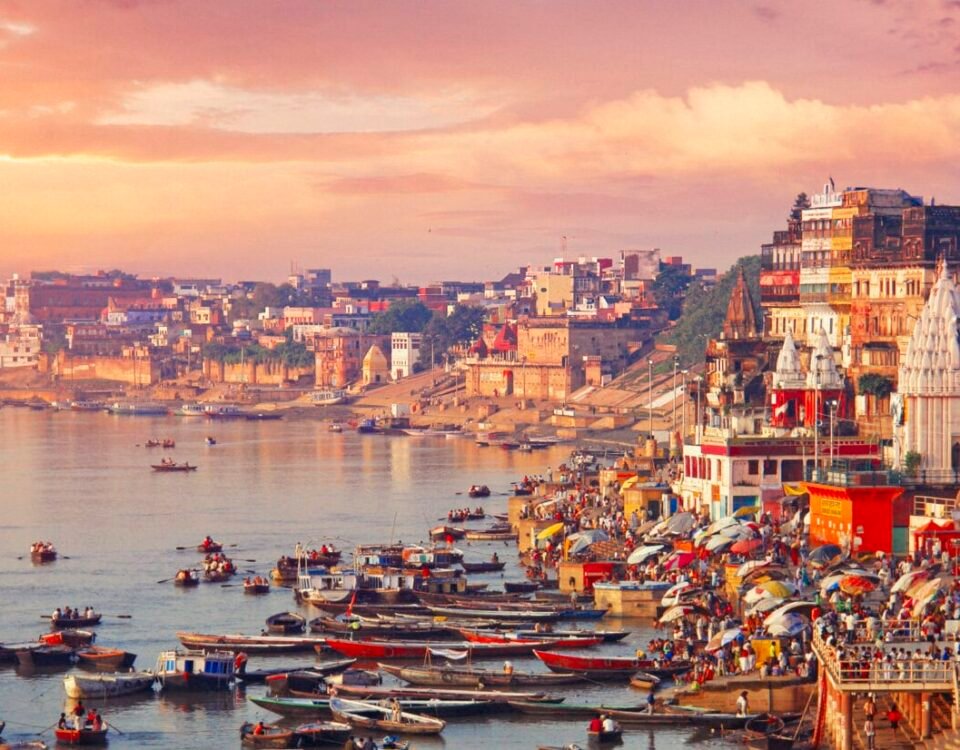Taj Mahal Uncovered: History, Architecture, and Timeless Significance of India’s Iconic Monument

Top Hill Stations in Rajasthan to Beat the Desert Heat
July 4, 2025
Bhangarh Fort: Haunted Stories, History, and the Ghostly Legend of Rajasthan’s Most Mysterious Fort
July 14, 2025🔹Introduction: A Timeless Symbol of Love in Agra
The Taj Mahal is more than just a monument—it’s a timeless expression of love, loss, and imperial grandeur. Standing gracefully on the southern bank of the Yamuna River in Agra, this white-marble mausoleum has captivated the world with its ethereal beauty and romantic legacy. Often described as a “teardrop on the cheek of time,” the Agra Taj Mahal draws millions of travelers, historians, and dreamers from around the globe each year. Built by Emperor Shah Jahan in memory of his beloved wife Mumtaz Mahal, it continues to evoke awe through its perfect symmetry, intricate artistry, and profound emotional resonance.
🔹Taj Mahal Location and How to Reach
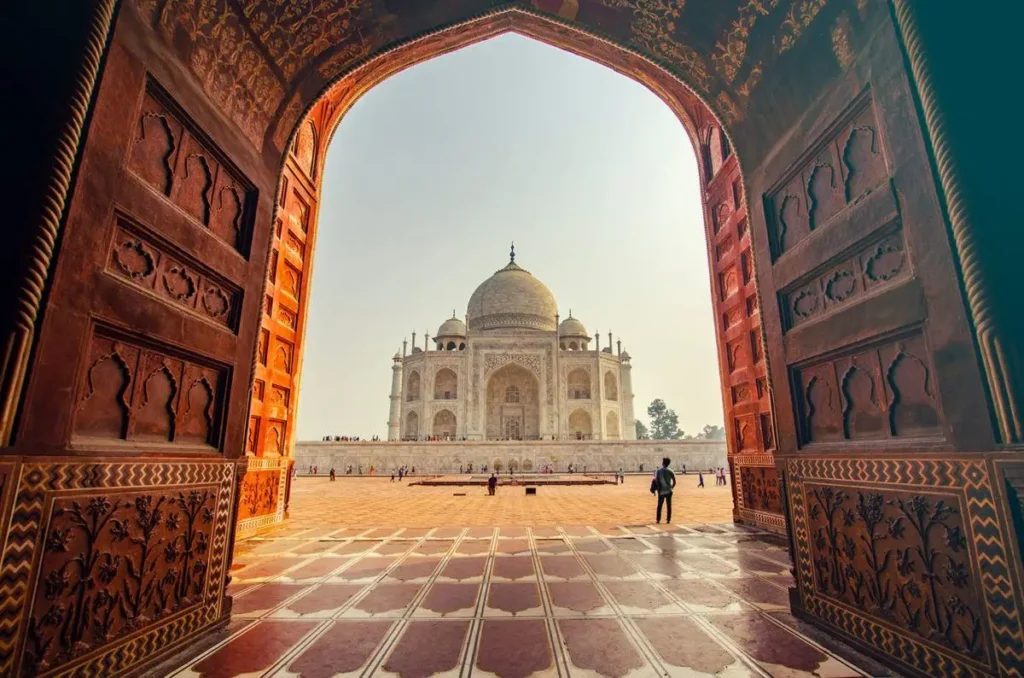
The Taj Mahal location is in the heart of Agra, a historic city in the northern Indian state of Uttar Pradesh. Situated on the southern bank of the Yamuna River, the monument is positioned within the well-preserved Mughal cityscape and is surrounded by lush gardens and sandstone walls that form part of the Taj complex. Its location was carefully chosen to reflect the serenity and majesty the Mughal emperor Shah Jahan envisioned.
For travelers, reaching the Taj Mahal is convenient from major cities like Delhi and Jaipur. The nearest railway station is Agra Cantt, located just 6 kilometers away. If you’re arriving by air, the Agra Airport (Kheria Airport) is about 13 kilometers from the monument. Alternatively, visitors often arrive via the Yamuna Expressway from Delhi, making it a comfortable 3–4 hour drive.
First-time visitors should note that the Taj Mahal is located in a pedestrian-only zone. Electric shuttles, cycle rickshaws, and battery-operated buses are available from the designated parking areas. To make the most of your visit, aim to arrive early in the morning to avoid crowds and witness the monument glowing at sunrise.
🔹Taj Mahal Story: A Love That Echoes in Marble
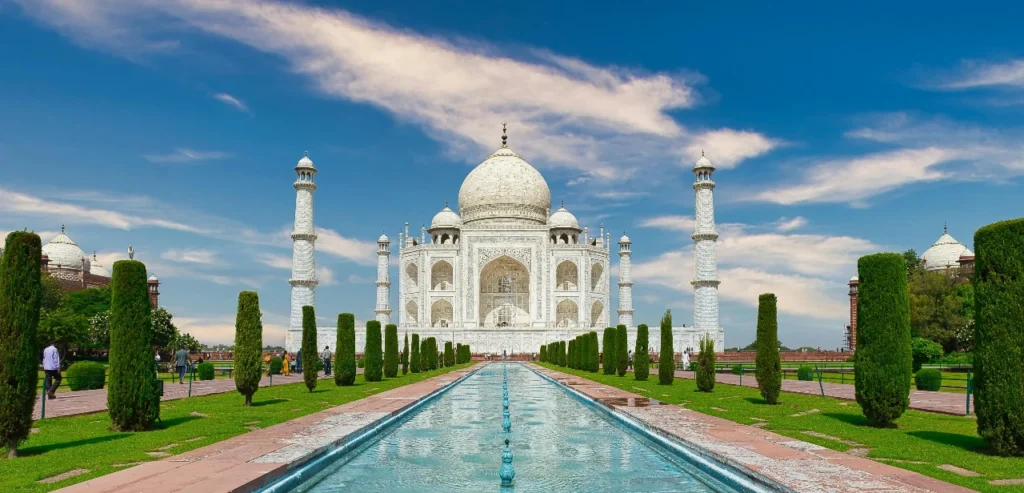
The Taj Mahal story is one of eternal love, profound loss, and majestic tribute. At its heart lies the emotional saga of Mughal Emperor Shah Jahan and his favorite wife, Mumtaz Mahal. Their bond was not only romantic but also deeply spiritual—so much so that when Mumtaz passed away in 1631 during childbirth, Shah Jahan was devastated. Overwhelmed by grief, he resolved to create a monument so beautiful and timeless that it would immortalize their love forever.
But the story of the Taj Mahal isn’t just about romance; it is also a tale of craftsmanship, devotion, and imperial vision. To fulfill his promise, Shah Jahan summoned the finest artisans, architects, calligraphers, and stone carvers from across the Mughal Empire and beyond. The man who made the Taj Mahal possible in architectural terms was Ustad Ahmad Lahauri, believed to be the chief architect behind its extraordinary design.
It took over 20 years and more than 20,000 workers to complete the monument. Today, the Taj stands not only as a mausoleum but as a powerful reminder of a love that transcended life itself—etched in marble for all eternity.
🔹When Was the Taj Mahal Built and Why?
The question “when was the Taj Mahal built” leads us to one of the most awe-inspiring projects in India’s architectural history. Commissioned in 1631 by the Mughal Emperor Shah Jahan, the Taj Mahal was a grand tribute to his beloved wife Mumtaz Mahal, who tragically passed away during childbirth. Overcome with grief, the emperor vowed to create a monument that would stand as a symbol of their eternal love.
📜 Key Events That Led to Its Construction:
- June 1631: Mumtaz Mahal dies during the birth of her 14th child while accompanying Shah Jahan on a military campaign.
- Late 1631: Shah Jahan decides to build an extraordinary mausoleum in her memory.
- 1632: This marks the official start of the Taj Mahal’s construction—answering the historic query of when was the Taj Mahal built.
🏗️ Timeline of Construction (Year-wise Breakdown):
- 1632: Site chosen along the Yamuna River; foundation work begins.
- 1633–1638: The central mausoleum structure is constructed, including the majestic dome and minarets.
- 1639–1643: Intricate marble inlay work, floral carvings, and Quranic calligraphy adorn the monument.
- 1643: The mausoleum is completed, and Mumtaz Mahal’s remains are placed inside.
- 1643–1648: Adjacent structures like the mosque and jawab are constructed.
- 1649–1653: Landscaping, gateway, fountains, and gardens are finalized.
🧱 Noteworthy Construction Highlights:
- More than 20,000 artisans and laborers were involved.
- Supervised by chief architect Ustad Ahmad Lahauri.
- Premium materials like Makrana white marble, red sandstone, and semi-precious stones sourced from across Asia.
🎯 Why Was the Taj Mahal Built?
The Taj Mahal wasn’t just built to house a tomb—it was built to immortalize a love story. For Shah Jahan, it was a way to preserve the beauty and memory of Mumtaz Mahal forever. The structure was also designed to represent Jannat (paradise), blending symbolism with stunning Mughal artistry.
More than a mausoleum, it became a symbol of devotion and loss, crafted with care and symmetry over the course of 21 years, making it one of the most remarkable answers to the question: when was the Taj Mahal built—and why?
🔹Who Made or Invented the Taj Mahal?
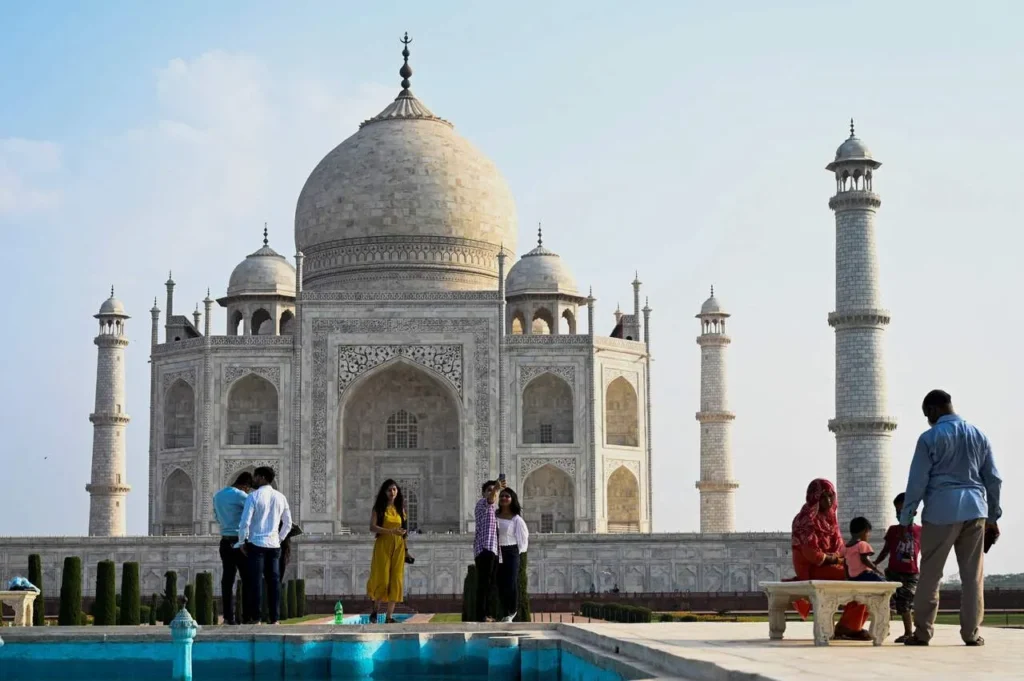
The question “who made Taj Mahal” often leads to a mix of fact and folklore. While it’s widely known that Mughal Emperor Shah Jahan commissioned the Taj Mahal, the monument’s creation was a collective masterpiece involving some of the most skilled minds and hands of the 17th century.
🏛️ Shah Jahan – The Visionary Behind the Monument
Shah Jahan, driven by deep sorrow after the death of his wife Mumtaz Mahal in 1631, envisioned a structure that would symbolize their eternal love. He played the role of chief patron—overseeing the project, approving designs, and ensuring that no expense was spared in making the monument a timeless marvel.
🧠 Who Actually Designed and Constructed the Taj Mahal?
When exploring who made the Taj Mahal, it’s important to recognize Ustad Ahmad Lahauri, the chief architect. He was a Persian architect known for his expertise in Mughal architecture and is most often credited with leading the team behind the Taj’s design and execution.
Other major contributors included:
- Ismail Afandi (Ismail Khan) – dome specialist from the Ottoman Empire.
- Chiranjilal – chief sculptor and inlay artisan from Delhi.
- Amanat Khan – calligrapher whose inscriptions grace the monument.
- Muhammad Hanif – supervisor of masonry.
These artists and thousands of laborers worked over two decades to bring Shah Jahan’s dream to life.
❌ Disproving Myths: Who Invented the Taj Mahal?
Many ask, “who invented the Taj Mahal?”—a phrase that can be misleading. The Taj Mahal wasn’t “invented” like an object; it was commissioned, designed, and constructed through a process involving architectural mastery, imperial patronage, and vast resources. No single person “invented” it, but rather, it emerged from the collaborative brilliance of Mughal artisans, planners, and visionaries.
In truth, the Taj Mahal is the result of one man’s love, a team’s genius, and an empire’s resources—forever etched in white marble for the world to admire.
🔹Exploring the Breathtaking Architecture of the Taj Mahal
The Taj Mahal architecture is a harmonious blend of Persian, Islamic, and Indian styles—an epitome of Mughal excellence that continues to inspire architects and historians worldwide. Every element of its structure is carefully crafted to evoke a sense of balance, tranquility, and divine beauty.
🕌 Architectural Style and Layout
The Taj Mahal follows the principles of Mughal architecture, characterized by grand scale, precise symmetry, and ornamental detailing. At its heart stands the white marble mausoleum topped with a massive dome—flanked by four slender minarets that enhance its elegance and stability.
Some striking features of the Taj Mahal include:
- A 27-meter-high central dome shaped like an onion, crowned with a gilded finial.
- Intricate marble inlay work with semi-precious stones such as lapis lazuli, jade, turquoise, and carnelian.
- Calligraphic inscriptions from the Quran carved along the archways.
🌸 Charbagh Gardens and Symmetry
One of the defining characteristics of the Taj Mahal is its use of charbagh, or four-part Persian-style gardens. These perfectly symmetrical gardens, divided by water channels, symbolize the Islamic idea of paradise. The reflection of the main dome in the central pool adds to the monument’s ethereal charm.
The symmetry extends beyond the gardens:
- Identical red sandstone buildings on either side (mosque and jawab).
- Mirror-like placement of architectural elements, fountains, and pathways.
🎨 Craftsmanship That Defies Time
The artisans employed delicate techniques like pietra dura (stone inlay), intricate jali screens, and finely carved marble panels. Each element adds spiritual symbolism and aesthetic harmony to the structure.
If you’re planning a heritage-focused itinerary that includes the Taj Mahal, Delhi, and Jaipur—consider embarking on a curated Golden Triangle Tour to experience the best of India’s architectural brilliance, cultural richness, and imperial legacy.
From its majestic form to its fine detailing, the Taj Mahal remains one of the most breathtaking architectural masterpieces in the world—a monument where structure, story, and soul converge.
🔹Exploring the Breathtaking Architecture of the Taj Mahal
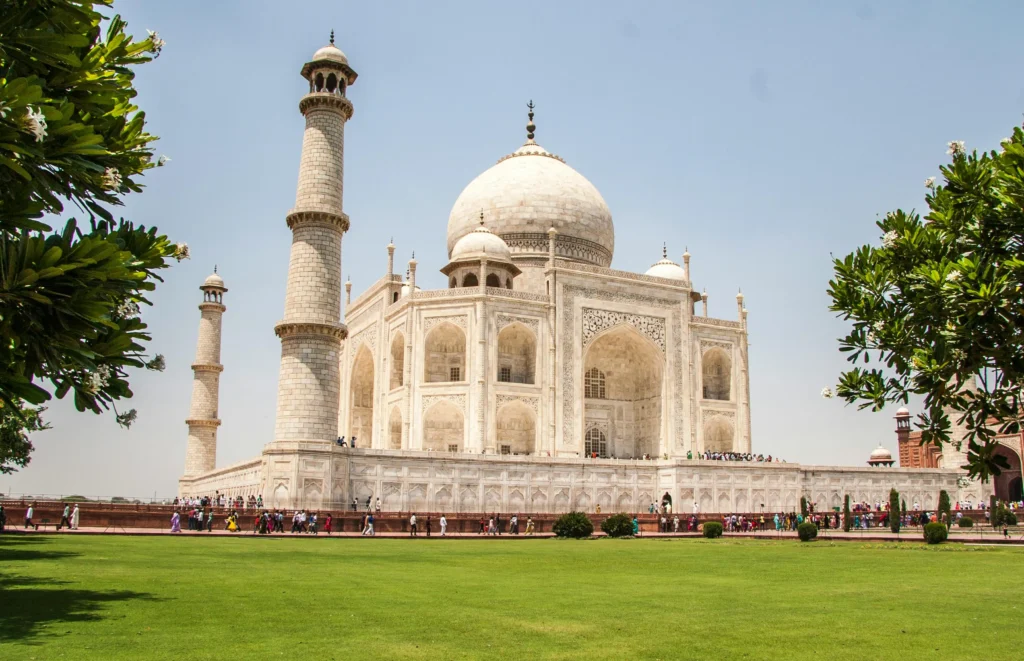
The Taj Mahal architecture is a harmonious blend of Persian, Islamic, and Indian styles—an epitome of Mughal excellence that continues to inspire architects and historians worldwide. Every element of its structure is carefully crafted to evoke a sense of balance, tranquility, and divine beauty.
🕌 Architectural Style and Layout
The Taj Mahal follows the principles of Mughal architecture, characterized by grand scale, precise symmetry, and ornamental detailing. At its heart stands the white marble mausoleum topped with a massive dome—flanked by four slender minarets that enhance its elegance and stability.
Some striking features of the Taj Mahal include:
- A 27-meter-high central dome shaped like an onion, crowned with a gilded finial.
- Intricate marble inlay work with semi-precious stones such as lapis lazuli, jade, turquoise, and carnelian.
- Calligraphic inscriptions from the Quran carved along the archways.
🌸 Charbagh Gardens and Symmetry
One of the defining characteristics of the Taj Mahal is its use of charbagh, or four-part Persian-style gardens. These perfectly symmetrical gardens, divided by water channels, symbolize the Islamic idea of paradise. The reflection of the main dome in the central pool adds to the monument’s ethereal charm.
The symmetry extends beyond the gardens:
- Identical red sandstone buildings on either side (mosque and jawab).
- Mirror-like placement of architectural elements, fountains, and pathways.
🎨 Craftsmanship That Defies Time
The artisans employed delicate techniques like pietra dura (stone inlay), intricate jali screens, and finely carved marble panels. Each element adds spiritual symbolism and aesthetic harmony to the structure.
If you’re planning a heritage-focused itinerary that includes the Taj Mahal, Delhi, and Jaipur—consider embarking on a curated Golden Triangle Tour to experience the best of India’s architectural brilliance, cultural richness, and imperial legacy.
From its majestic form to its fine detailing, the Taj Mahal remains one of the most breathtaking architectural masterpieces in the world—a monument where structure, story, and soul converge.
🔹What is the Taj Mahal Made Of?
One of the most fascinating aspects of the Taj Mahal is the exquisite material used to build Taj Mahal, which contributes to its ethereal glow and timeless beauty. The monument is an architectural wonder not just because of its design, but also because of the quality, rarity, and precision of the materials used in its construction.
🏛️ Core Materials That Define the Taj Mahal
- White Makrana Marble: Quarried from the town of Makrana in Rajasthan, this pure white marble forms the primary material of the mausoleum. Known for its strength and translucence, Makrana marble reflects sunlight beautifully—giving the monument its iconic glow at sunrise, midday, and sunset.
- Red Sandstone: Used in the construction of the outer buildings like the mosque and gateway. It provides a dramatic contrast to the white marble, enhancing the visual harmony of the entire complex.
- Semi-Precious Stones: Over 28 varieties of stones such as jade (China), turquoise (Tibet), lapis lazuli (Afghanistan), sapphire (Sri Lanka), and carnelian (Arabia) were inlaid into marble using a fine technique known as pietra dura to form floral patterns and Quranic calligraphy.
🌍 Sources and Global Reach
Materials were sourced from across the Mughal Empire and beyond:
- Marble – Rajasthan, India
- Jasper – Punjab
- Turquoise – Tibet
- Crystal & Jade – China
- Lapis Lazuli – Afghanistan
- Sapphire – Sri Lanka
- Carnelian – Arabia
The logistics of transporting these materials in the 17th century involved thousands of elephants and ox-carts over vast distances, reflecting the monumental scale and ambition behind the Taj.
If you’re captivated by the grandeur and materials of the Taj Mahal, you might also enjoy a Golden Triangle Tour With Ranthambore, which combines India’s regal architecture, vibrant cities, and thrilling wildlife experiences in one unforgettable journey.
Every slab of stone in the Taj Mahal tells a story—not just of love and loss, but of unmatched artistry and empire-wide collaboration.
🔹Significance of the Taj Mahal in Indian and World Heritage
The significance of the Taj Mahal goes far beyond its stunning appearance—it is a symbol of India’s rich cultural heritage, an architectural masterpiece, and a universal emblem of love. Over the centuries, this monument has come to represent not only the grandeur of the Mughal Empire but also the enduring spirit of human creativity and emotion.
🏛️ A UNESCO World Heritage Site
In 1983, the Taj Mahal was designated a UNESCO World Heritage Site, recognized for its “outstanding universal value.” This honor highlights its role as one of the finest examples of Mughal architecture and its influence on subsequent architectural styles across Asia and beyond.
UNESCO described it as “the jewel of Muslim art in India and one of the universally admired masterpieces of the world’s heritage.” This status ensures global efforts for its preservation and positions the Taj Mahal as a monument that belongs not just to India, but to the world.
📖 Taj Mahal History and Legacy
The Taj Mahal history is closely linked with the political, artistic, and cultural zenith of the Mughal dynasty. Constructed during the reign of Shah Jahan, it reflects the empire’s immense wealth, devotion to art, and architectural sophistication. More than just a tomb, it was envisioned as a reflection of paradise—a tranquil and sacred space for the departed soul of Mumtaz Mahal.
🌍 A Global Icon and Wonder of the World
The Taj Mahal was named one of the New Seven Wonders of the World in 2007, a title earned through millions of global votes and consistent admiration. It continues to feature prominently in international travel rankings, documentaries, and scholarly research.
Its universal appeal lies in:
- The story of eternal love it represents.
- The harmonious architectural design and spiritual symbolism.
- Its role in shaping India’s image as a land of romance, beauty, and history.
Today, the Taj Mahal stands as a proud emblem of Indian identity—celebrated not only for its visual perfection but for the deeper meanings it carries across cultures and generations.
🔹What is Taj Mahal Urs and Why is it Celebrated?
Among the many lesser-known events connected to the monument, the Taj Mahal Urs stands out as a deeply spiritual and culturally significant celebration. This annual festival commemorates the death anniversary (Urs) of Mumtaz Mahal, in whose memory the Taj Mahal was built.
🕌 The Meaning and Rituals of Taj Mahal Urs
In Islamic tradition, “Urs” means wedding, symbolizing the soul’s union with the Divine. Every year, during the Islamic month of Rajab, the Taj Mahal Urs is held over three days. It draws pilgrims, Sufi devotees, and visitors who come to pay their respects and participate in the rituals held on the premises.
Key features of the festival include:
- Special Prayers and Qawwali performances by Sufi musicians.
- Chadar Poshi (offering of cloth) at the cenotaph of Mumtaz Mahal.
- Free public access to the inner sanctum, which is typically restricted.
- Rituals conducted by local religious leaders and caretakers of the Taj complex.
📅 When and Where to Experience It
The exact dates vary each year based on the lunar calendar. The event takes place inside the Taj Mahal complex, providing a rare opportunity to witness its spiritual ambiance and inner chambers without the usual tourist crowds.
If you’re planning to immerse yourself in India’s rich cultural and spiritual experiences, a Golden Triangle Tour with Varanasi is a perfect choice. This itinerary connects Delhi, Agra, Jaipur, and Varanasi—offering a holistic journey through history, architecture, and divine rituals like the Urs.
Celebrating Taj Mahal Urs is not just about remembering Mumtaz Mahal—it’s about experiencing the timeless love and reverence that the Taj Mahal has embodied for nearly four centuries.
🔹Important Points and Fast Facts About the Taj Mahal

To wrap up your understanding of this magnificent monument, here are some essential highlights and Taj Mahal important points that every traveler, history enthusiast, or cultural explorer should know. These facts showcase the monument’s scale, significance, and timeless allure.
📌 Key Architectural and Historical Facts
- 📍 Location: Agra, Uttar Pradesh, India
- 🗓️ Construction Began: 1632
- 🏗️ Completed: 1653
- 🛕 Built By: Mughal Emperor Shah Jahan
- 👷♂️ Number of Workers: Over 20,000 artisans and laborers
- 📐 Height of Main Dome: Approximately 73 meters (240 feet)
- 🌍 UNESCO Status: World Heritage Site since 1983
- 💰 Estimated Cost: ₹32 million at the time (~$1 billion today adjusted for inflation)
- 🧱 Materials Used: White Makrana marble, semi-precious stones, red sandstone
📷 Photography & Visitor Tips
- 📸 Best time for photos: Sunrise for soft golden light and fewer crowds.
- 🕘 Visiting hours: 6:00 AM to 6:30 PM (closed on Fridays for prayers).
- 🎟️ Entry tip: Book tickets online in advance to avoid long queues.
- 🎒 Bags: Only small purses and cameras allowed; security is strict.
- 👟 Footwear: You’ll need to remove or cover shoes before entering marble areas.
🧭 Travel Planning Tip
If you’re planning to explore more architectural gems, royal palaces, and desert landscapes beyond Agra, consider booking the Best Rajasthan Tour Package to witness the grandeur of Jaipur, Udaipur, Jodhpur, and more.
These Taj Mahal important points help you appreciate the depth, detail, and devotion behind one of the world’s greatest monuments—a structure that continues to mesmerize every visitor who stands before it.
🔹Conclusion: Why the Taj Mahal Still Captivates the World
The Taj Mahal is not just an architectural wonder—it’s a profound expression of love, artistry, and imperial vision that continues to captivate hearts around the globe. From its perfectly symmetrical design and shimmering white marble to the emotional legacy of Shah Jahan and Mumtaz Mahal, every inch of the monument tells a story that transcends time.
Its history is woven into the soul of India, while its elegance has become a symbol of eternal beauty and devotion. Whether you’re drawn to its intricate carvings, its historical significance, or simply the emotions it evokes at first sight, the Taj Mahal offers an experience that words can barely capture.
If you’ve ever stood before the Taj Mahal or dream of doing so one day, we’d love to hear your story. Share your memories, reflections, or even questions about your future visit in the comments.
To help plan your journey, explore our detailed travel guides and curated tours—whether you’re considering a classic Golden Triangle itinerary, a spiritual journey to Varanasi, or a royal exploration of Rajasthan’s majestic forts and palaces. The Taj awaits, timeless and radiant, ready to inspire you—just as it has inspired millions before.

